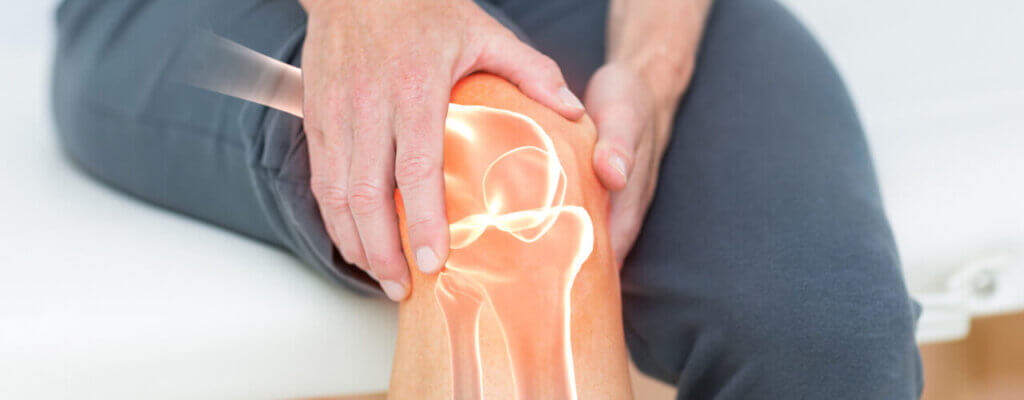If you’ve been dealing with hip and knee discomfort for a long time, you may believe it’s permanent. After all, is there any way to gain long-term relief from severe joint pain?
You can, and physical therapy is one of the most effective ways to do so! You can reduce – and potentially even eliminate – the discomfort in your hips and knees with the correct physical therapy treatments.
Call our clinic today to learn more about how physical therapy can help you beat the hip and knee pain blues!
Common causes of hip and knee pain
Hip and knee pain can be caused by a great number of problems. Some of these are related to musculoskeletal misalignment, poor posture, and/or excess weight; others occur as the result of natural aging or unhealthy sports/work habits.
Your hip or knee pain may stem from:
- Runner’s knee, an instability of the kneecap
- Osteoarthritis, a painful inflammatory condition involving deteriorated joint cartilage
- Tendinitis, or stretched ligaments
- Bursitis, an inflammation of the friction-reducing sacs surround the joints
- Infections
- Traumatic injuries, such as dislocation of the joint
- Postural/alignment issues that throw your body off balance, straining the knees or hips
Our physical therapist can usually detect what’s causing your hip or knee pain just by looking at it. A problem with the bones or cartilage, for example, is more likely to create pain along the interior of the hip. An issue with the muscles, tendons, or ligaments on the outside side is the most common cause of pain.
Some other causes of hip and knee pain below:
- Knee Pain – Injuries that include torn cartilage or damaged ligaments can cause knee pain. Fractures, tendinitis, and knee bursitis are all common knee injuries. Medical conditions such as arthritis or gout can cause mild to severe knee pain. You may be experiencing stiffness or swelling in one or both knees. It might be difficult to stand, walk, or fully straighten your knee. Sometimes knees will make popping or crunching noises.
- Hip Pain – Hip pain can be caused by a variety of medical conditions as well as from certain injuries. Inflamed tendons from over-exertion or an athletic injury can cause temporary or chronic hip pain. Tendinitis, dislocation, sprains, and pinched nerves can all contribute to or be the cause of hip pain. Hip pain may also result from repetitive injuries or poor posture.
All the ways PT can benefit you
Hip and knee discomfort can be quite annoying; it appears that no matter what you do, if you move, you will be in agony. However, there are techniques to lessen your suffering in the long run.
Physical therapy has been shown to help patients of all ages and backgrounds reduce hip and knee pain. It may require some time and effort on your part, but it has been proven time and time again to assist patients of all ages and backgrounds reduce hip and knee pain.
How can physical therapy provide such long-lasting pain relief? There are several causes for this, including:
- Preventing future injuries. One of the big frustrations with joint pain is that it never seems to fully go away. Even if you rest for a while and feel better, when you go out and start moving again the injury can flare up all over again. But with physical therapy exercises, you get much stronger than you were before. The added strength allows your muscles to better support your joints, so you are less likely to experience additional irritation in the joint.
- Discovering how to move in the proper ways. Many times the pain you are experiencing in your hip and knee is related to unhealthy movement patterns. They may have been learned over time or in response to an initial injury. Those unhealthy movements cause added strain on your joints and lead to further pain and injuries. Your physical therapist will help identify unhealthy movement patterns and give you advice to replace those patterns with ones that will protect your joints from further injury.
- Helping you live a healthy and active life. Chronic hip and knee pain can be improved significantly through regular exercise and a healthy lifestyle. Of course, you have to be able to move without significant pain to exercise – something that is made much easier by physical therapy. Your physical therapist can help you improve your hip and knee pain significantly and teach you ways to exercise so that you avoid injuring your joints. Through physical therapy, you can regain strength and mobility so that you can lead a more active lifestyle.
- Treating your problem at its root. If you just treat the symptoms of a hip and/or knee issue, you are almost guaranteed to see the problem pop up again later on. But if you can identify the source of the problem, you can actually treat what is causing the pain. Physical therapists have a process to identify the causes of hip and knee pain so that they can give you targeted treatments designed to get to the bottom of what is causing your pain.
Find relief with us today
We want you to know that we are here to help if you are experiencing hip or knee pain. Our physical therapy experts can assist you in both acute and long-term pain relief.
Make an appointment with your physical therapy team now to start getting the relief you deserve!
Tags: hip pain relief, knee pain relief, Hip and knee pain, hip pain, knee pain


